Well, here we are, 80 years since the publication of Better Comics No. 1 in March 1941. At that time, the Luftwaffe was peppering London with bombs, Rommel was pushing us around in North Africa, Jews were being transported to ghettos in Poland and the expansion of Auschwitz began. 80 years later, we’re in a bad state navigating a health crisis and suffering a lot of inconveniences along the way, but things are nowhere near as bad as they were then, especially for the people in Europe.
While 1941 worked its way towards December 7th and Pearl Harbor which gut-punched the entrance of the U.S. into the war, Canadian comic book publishers came onto the scene and a half-dozen new titles dropped on the stands. One of these titles was Grand Slam Comics Vol. 1 No. 1 dated Sept.-Oct. was put out by Anglo-American Publications in Toronto.
Anglo-American had previously put out Robin Hood Comics Vol. 1 No. 1 at the very start of Canadian comics, in March, right along the first issue of Better Comics from Maple Leaf Publications. But that first issue of Robin Hood didn’t look like a floppy. It was tabloid-sized item that resembled a black-and-white 14-page Sunday comic section.
That same month Anglo-American also put out four one-shot reprints of American Fox titles (Big Three Comics No. 2, Fantastic Comics No. 16, Mystery Men Comics No. 20, and Weird Comics No. 12). It somehow squeezed them in under the government blockade on American comics or reprints of them, but only as a one-shot effort.
By the time that Grand Slam Comics Vol. 1 No. 1 came out in Sept.-Oct., Maple Leaf Publications had had seven issues of Better Comics on the stands as well as three issues of Lucky Comics. Adrian Dingle and his Hillborough Studio had put out a couple of issues of Triumph-Adventure Comics with the second being the first Nelvana cover. Cy Bell and his Commercial Signs of Canada had just jumped into the fray with the first issue of Wow Comics—the start of what would become Bell Features—and Anglo-American itself had put out four issues of Robin Hood Comics and two issues of Freelance Comics. Canadian newsstands had incrementally begun to fill out with comic books again.
When Grand Slam Comics arrived, Anglo-American had only two, single hero titles out. One about a medieval outlaw which consisted of pasted up daily strips from the Toronto Evening Telegram of a few years before, and the other which featured the adventures of a hero in boots and jodhpurs who was battling the Axis through Africa. It was obvious that they began to feel the need to diversify and so Grand Slam Comics was born.
Grand Slam Comics Vol. 1 No. 1 introduced four new features: the Crusaders, a secretive team with a super rocket plane who are on the side of the allies; Pat the Air Cadet, a resourceful Canadian female air cadet who gets in and out of scrapes; Don Shield Secret Agent, a young British secret agent with a small, shield-like gadget he wears around his neck that can shoot out rays that reverse the motion of objects; Clip Thomson, a young R.C.A.F. pilot who sets out to cause turmoil and trouble for the Axis. All good, plain Canadian fodder.
However, there is a little irony in this home-grown diversification because Anglo-American soon began cozying up to an American publisher, Fawcett, to bring their stable of characters to Canada. Due to the governmental ban on allowing American books into the country or even reprinting those books, Anglo-American had to be creative. What they finally did do is get Fawcett to ship up their scripts and Anglo-American had their own artists redraw these scripts. The finalized deal saw Anglo put out its first issue of Whiz Comics in December of the year followed quickly by Captain Marvel Comics Vol. 1 No. 1 in January of 1942 and then their first issue of Spy Smasher Comics in June of 1942.
Having been able to bring arguably the most popular comic book characters from below the border across the 49th parallel, Anglo-American finally decided to inject additional Fawcett characters into their All-Canadian anthology titles Grand Slam Comics and Three Aces Comics. Grand Slam Comics got Captain Marvel Jr. in Vol. 2 No. 1 (Dec. 1942) and Three Aces Comics got Bulletman in Vol. 1 No. 12 (Jan. 1943).
These two Fawcett features dominated each of these titles until the summer of 1944 and then with Grand Slam Comics Vol. 3 No. 9 (Aug. 1944) and Three Aces Comics Vol. 3 No. 8 (Sept. 1944) Anglo-American reverted to original Canadian material. Meanwhile, the stand-alone Fawcett/Anglo titles (Captain Marvel, Whiz, and Spy Smasher) continued for another year until the end of the war with the twist that Anglo-American stopped redrawing them and simply put out black-and-white reprints inside Canadian drawn covers.
But let’s go back just before the foray into Fawcett and take a closer look at that first issue of Grand Slam Comics.
The lead-off story is the mysterious first appearance of The Crusaders who were created and drawn by ex-pat Irishman Les Gilpin. The story begins with a convoy of British merchant ships and their escorts in the North Atlantic who are confronted by a pod of German U-Boats–the infamous Red Skull Flotilla. The convoy takes extremely heavy losses until a futuristic-looking rocket plane shooting out a destructive ray appears out of the clouds to take on the Nazis. It picks off each of the subs, blowing a couple up with its blazing ray gun and taking out the rest by slicing right through the–even chasing one down through the surface of the water.
The mystery as to who’s manning the super plane isn’t helped much by a single panel that shows two silhouettes calling each other Bob and Paul. Of course, the rocket plane wins the day and traces a huge cross in the sky with its exhaust before it disappears into the clouds.
The Crusaders actually have a second story in this issue, but we learn little more about them except that, about half-way, we catch another single panel glimpse of the two crew members in sort of pyrotechnic uniforms:
At the story’s close, we also find out that The Crusaders seem to have a base near an island out in the ocean somewhere:
The Crusaders give up their Second World War context by the end of the first year of their run in Grand Slam Comics and begin becoming a sci-fi series by travelling to other planets. The trajectory of The Crusaders in Anglo-American comics still needs to be traced out. They also appear in the first issue of Three Aces Comics and seem to be pushed out of the picture once Anglo goes Fawcett, but they come back solidly when Three Aces moves away from the Fawcett features by Three Aces Comics Vol. 3 No. 9 (October 1944) and last until the end of the Anglo-American comics run through 1946.
Here is a picture of Les Gilpin with Ed Furness from about the time this comic came out. It’s taken from Bob MacMillan’s article on Anglo-American comics in John Bell’s first book Canuck Comics (Matrix Books 1986):
The next feature in this first issue of Grand Slam Comics is Pat the Air Cadet. The byline is “Macduff” but this is very probably a pseudonym for the team of Ted McCall who wrote the feature and Doris Slater who drew it. Therefore, the feature is notable as the first work by a female comic book artist in Canada. The story itself is about Pat Scott, a young female air cadet, who along with her twin brother, Jerry, recovers some missing long-range bomber plans.
The run of Pat the Air Cadet is another run that needs to be mapped out. It belongs to Grand Slam Comics, though she also appeared in the first issue of Three Aces Comics. The feature was pushed out on and off during Anglo-American’s infatuation with Fawcett characters. Pat the Air Cadet’s last appearance was in Grand Slam Comics Vol. 3 No. 12 (Nov. 1944) by which time Doris Slater had moved to Bell Features with her comic book take on Pat Joudry’s radio show, “Penny’s Diary,” in Active Comics.
The third feature in this debut issue of Grand Slam Comics is Don Shield, Secret Agent. Don Shield was a young British Secret Agent who invented a ray that could reverse the motion of anything it was pointed at. This ‘reverso ray’ was emitted from a shield-shaped pendant that hung around his neck. Accompanying Shield was a Hindu travelling companion called Saba.
Robert MacMillan found out in a series of interviews with Ed Furness, that Ed came up with the character while sitting with his wife at Sunnyside Railway Station and thinking what would happen if you had a ray you could shoot at a train to make it reverse its motion. Sunnyside was located just south of the complicated intersection of King, Queen, and Roncesvalles in the west end of Toronto and was a transportation hub for streetcars, busses, cabs and trains.
The Don Shield stories lasted for about the first year run of Grand Slam Comics but were displaced when Anglo-American made Captain Marvel Jr. the book’s lead character.
As for the final feature in this first issue of Grand Slam Comics–what Anglo-American didn’t have was an air ace series. Sure, Freelance could fly planes with great skill and the Crusaders were rocket monsters in the skies, but they didn’t have one of the main comic tropes of the Second World War—a fighter pilot. Cue Clip Thomson, All-Canadian college student and athlete who enlists in the R.C.A.F. and takes on the Nazis. The series was created and apparently drawn by J. R. McLeod about whom nothing more is known, and it was his only work in Canadian comics. Eventually in the series, Clip picks up a rotund co-pilot and sidekick pal named Tub, but the series runs only a dozen stories up until Grand Slam Comics had to make room for Fawcett’s Cap Jr. redraws.
Perhaps this Grand Slam Comics Vol. 1 No. 1 didn’t have the same impact as some of the other first issues from this seminal birth year of Canadian comics, but it showcased some interesting characters and the early work of significant Canadian creators. It must also be noted that Anglo-American comics like this title outlasted the titles of all the other companies that produced comics in Canada from 1941-46. Altogether, Grand Slam ran for 56 issues, turning full-colour just after the war and even received limited distribution below the border towards the end.
Canadian comics like this from 1941 are extremely difficult to find. If you’re resourceful and lucky and come across one, you’ll have a precious piece of comic book real estate. Keep collecting Canadian!
Here is a painting of Doris Slater, that first female Canadian comic book creator mentioned above. Doris was about 24 when she drew Pat the Air Cadet for Grand Slam Comics Vol. 1 No. 1 and this painting looks like it could match that time frame perfectly. The painting was done by a grande dame of Canadian art, Dorothy Austin Stevens, who was Doris Slater’s mentor and even became godmother to Doris’ daughter Patti.
NEWS
Nary a comic con on the horizon, nor one for many miles beyond the horizon. The covid situation has slowed down communication and plans for our 80th-anniversary initiatives but this was only to be expected. I don’t expect the reprint of Better Comics 1 to be ready for March as I originally planned but it will get done this year.
Check out our Society for the Promotion of Canadian Comics Facebook page. Ramón Pérez has started posting a ‘draw the golden age Canadian hero’ challenge and I’m impressed by the images being posted. My favourite is Rick Trembles’ (son of WECA artist Jack Tremblay) take on Nelvana in his own style:
He’s really captured the inner bitch-heart of our darling Canadian demigoddess of the north, almost inoculating her with a bit of modern-day Batman.

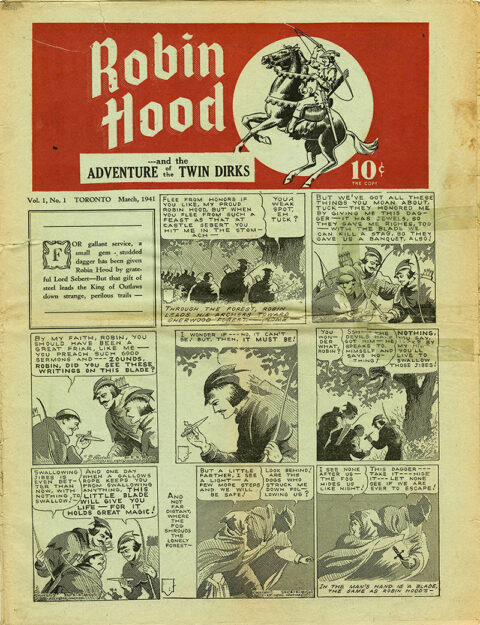
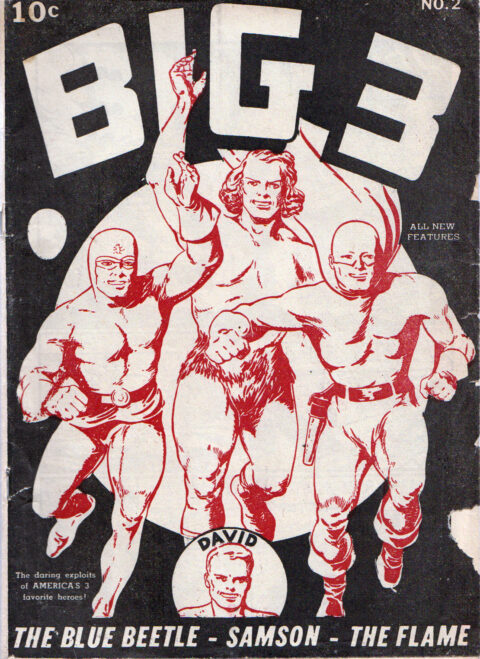
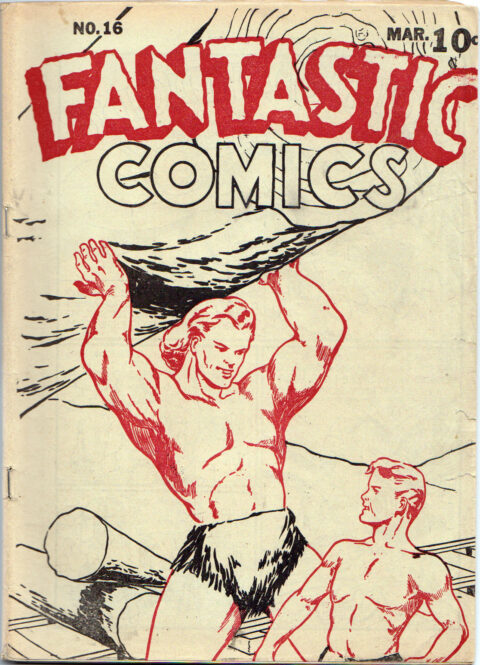
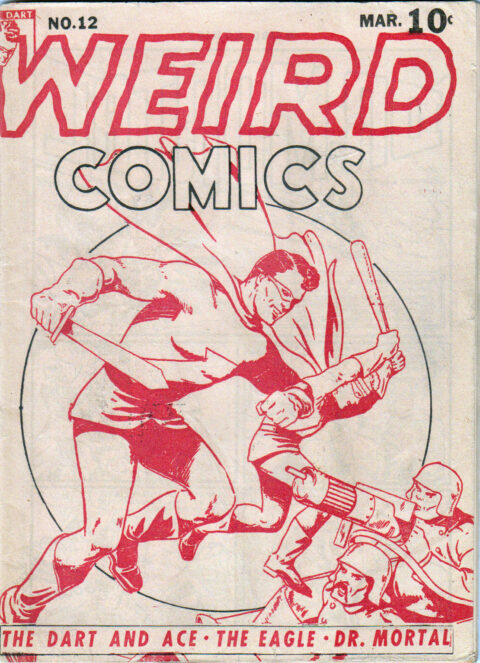
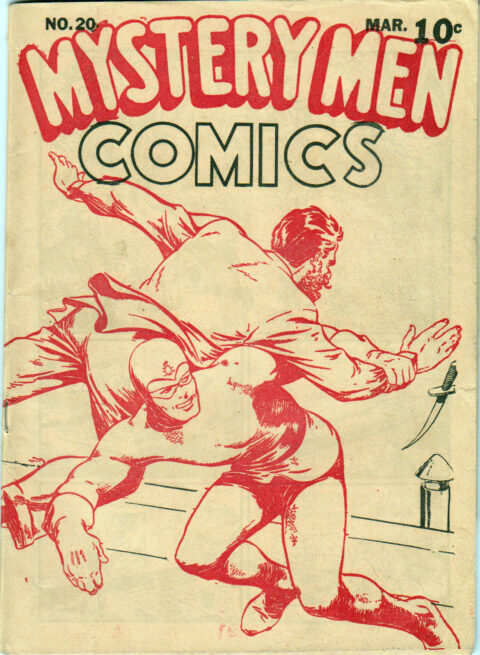
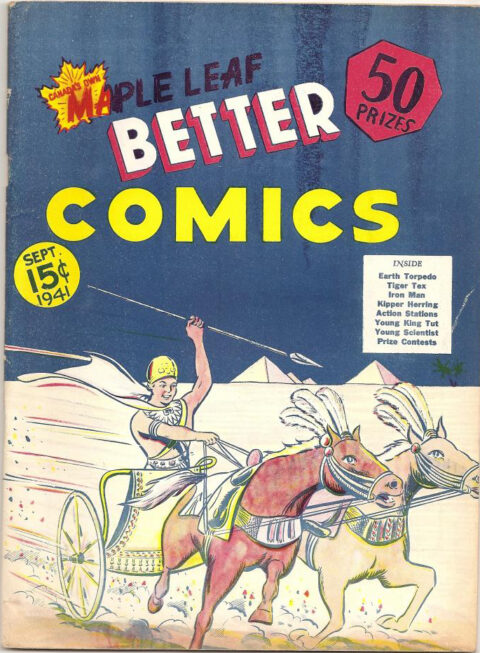
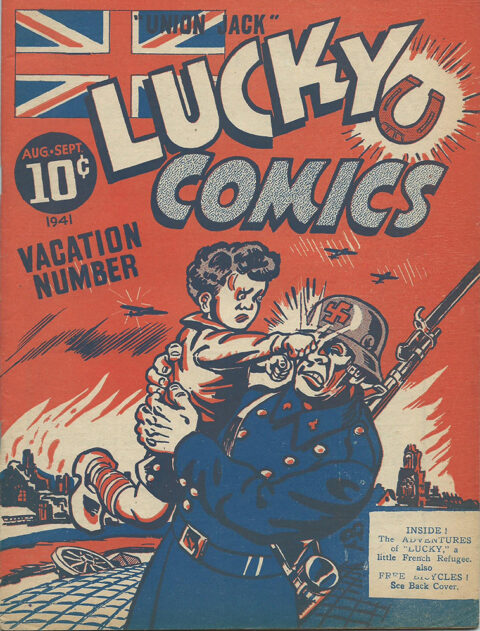
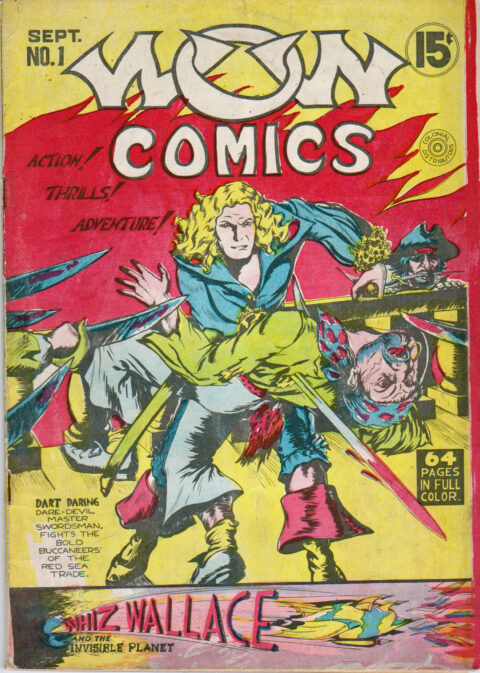
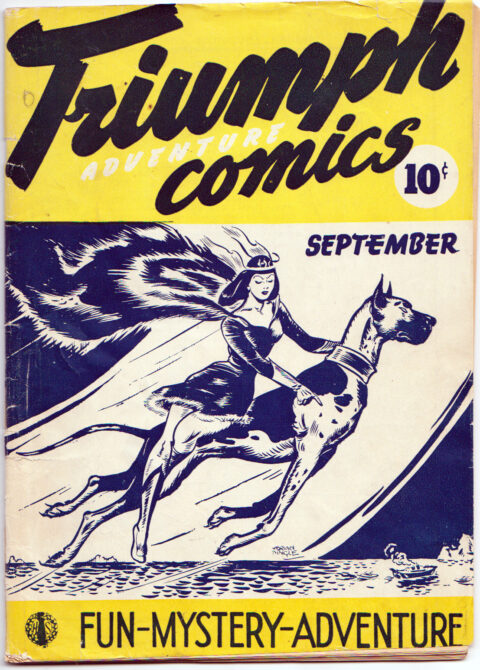
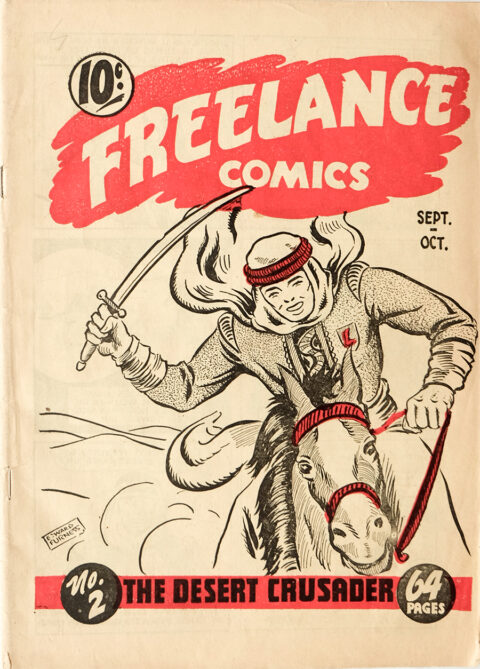
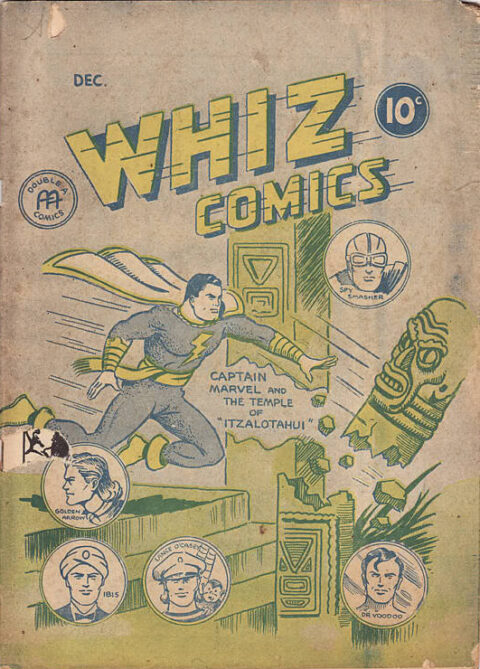
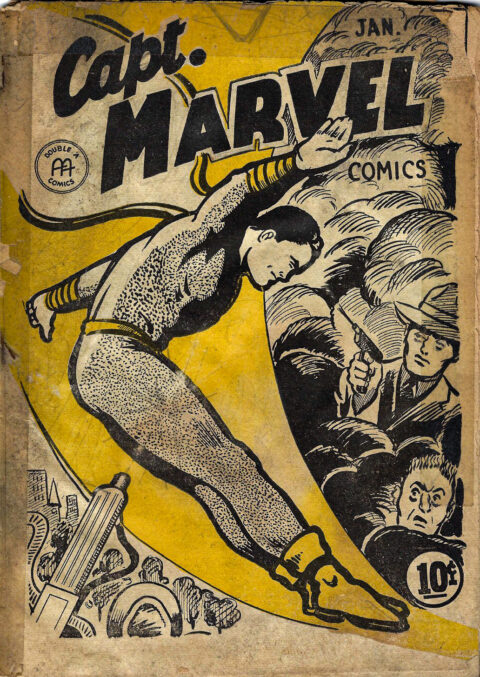
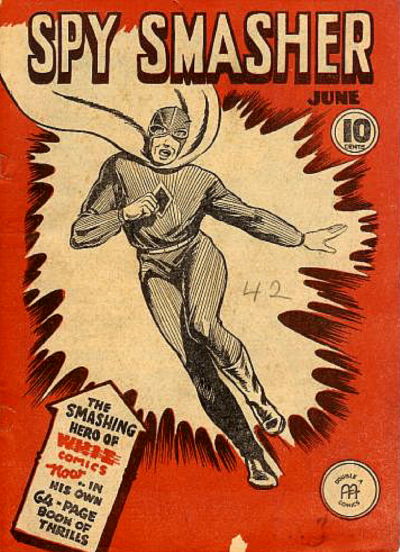
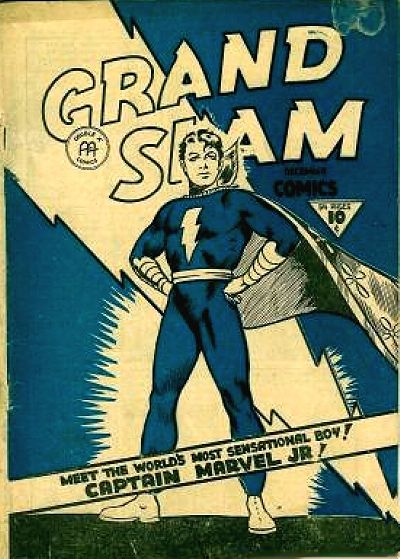
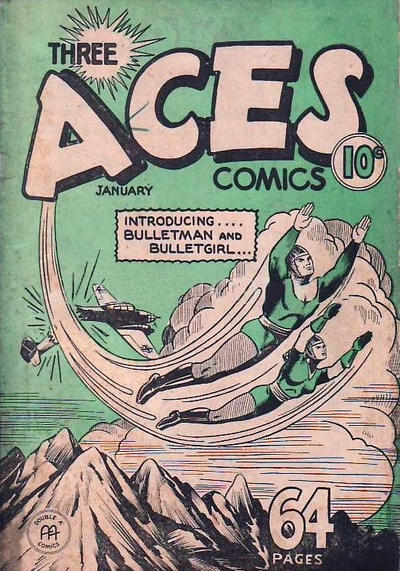
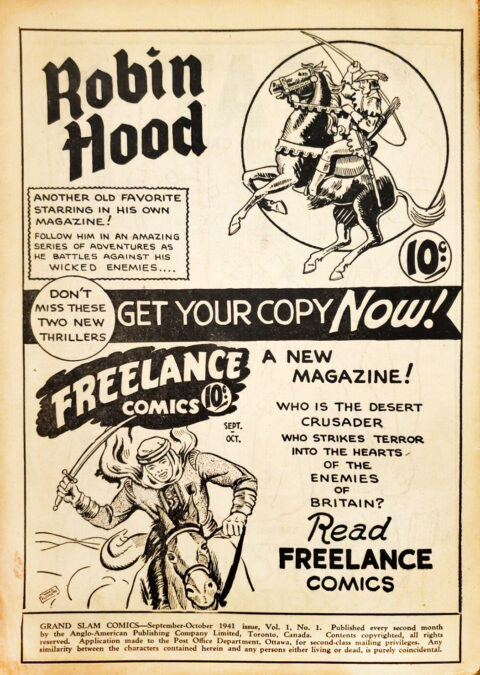
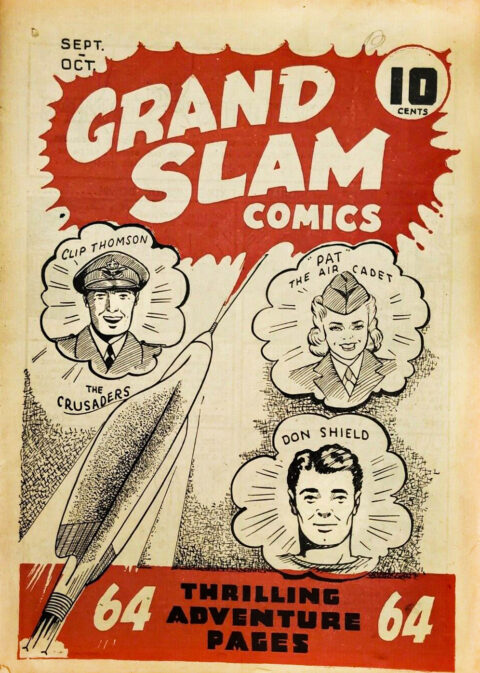
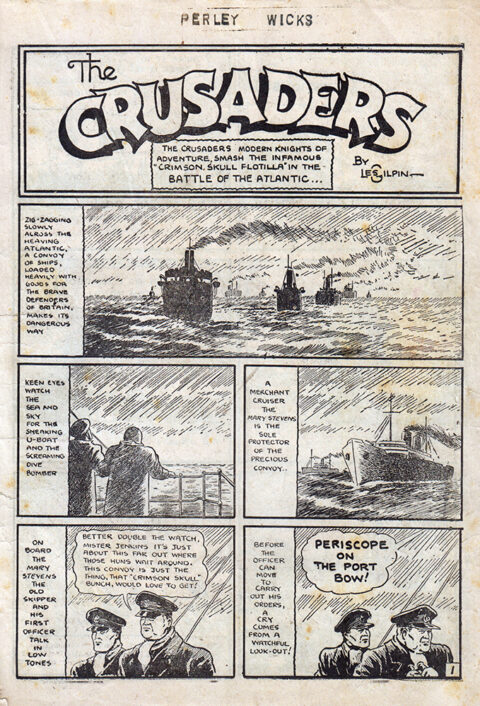
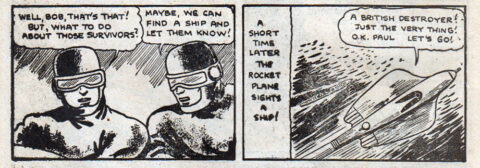
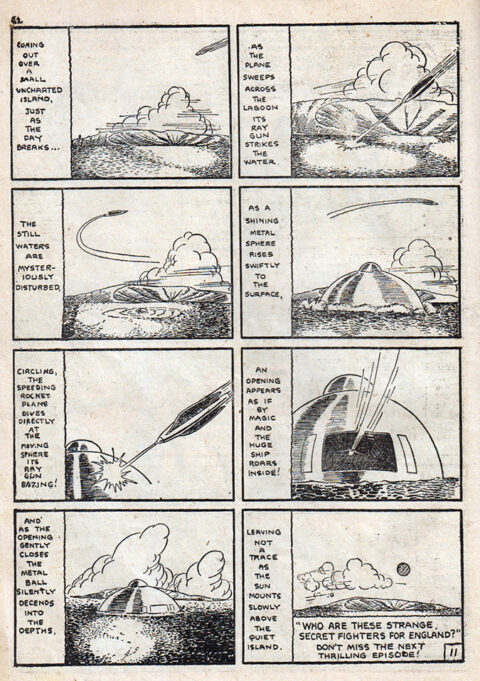
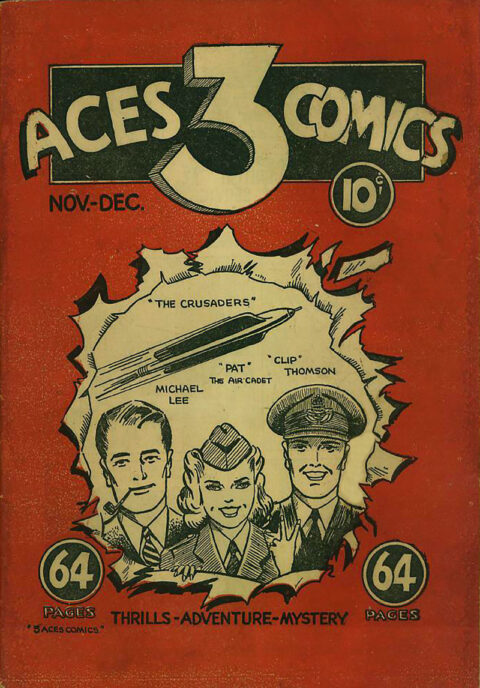
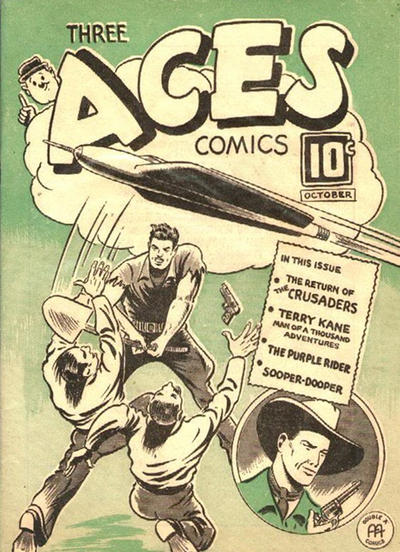
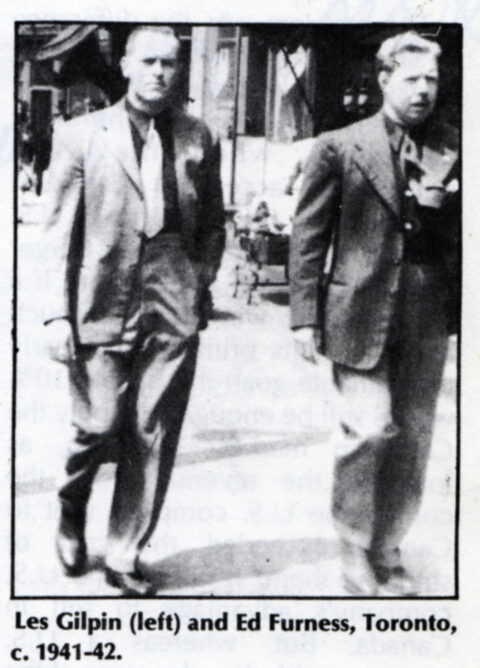
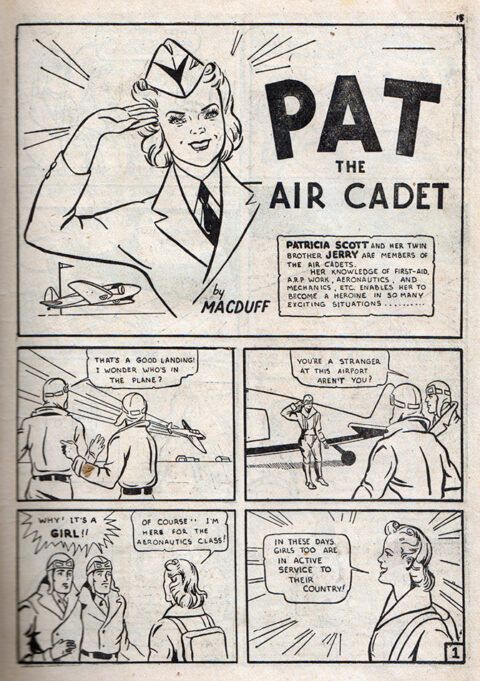
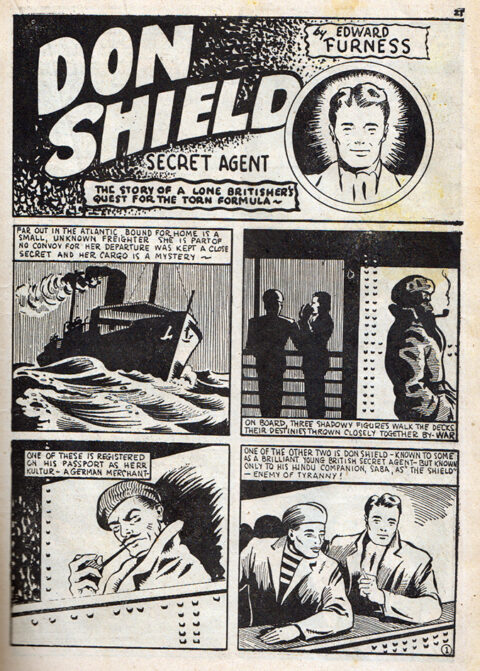
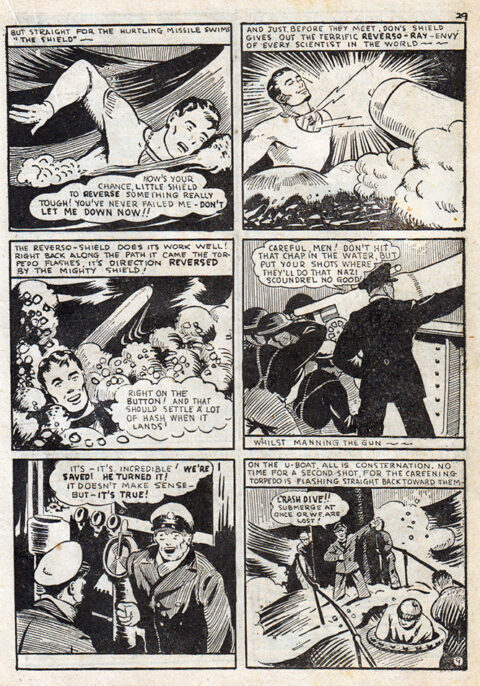
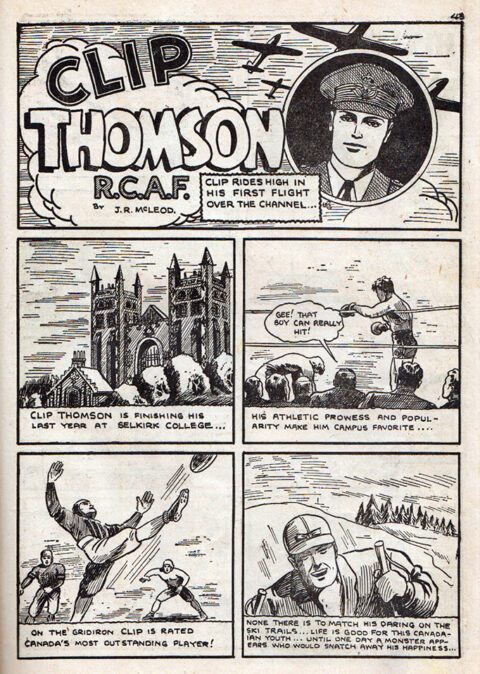
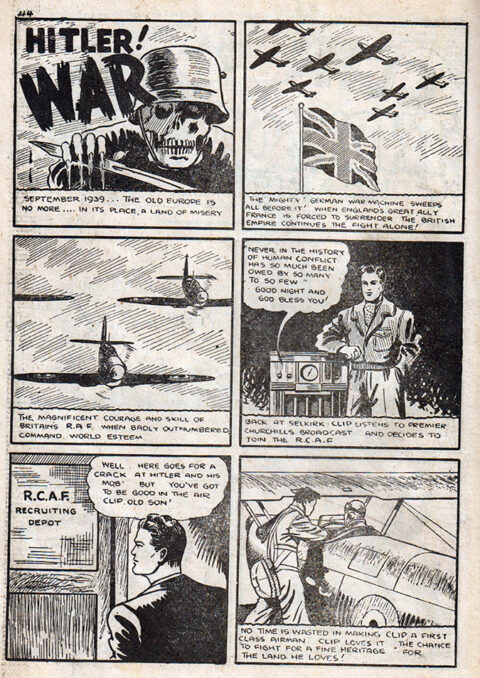
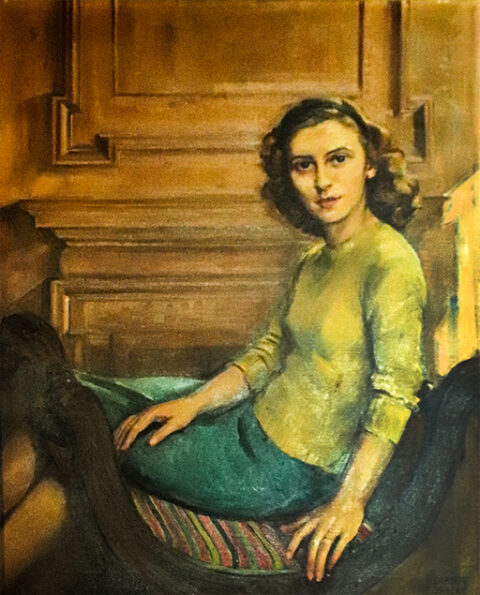
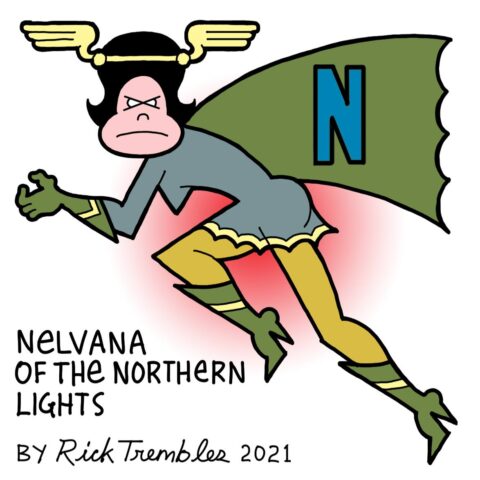



Fantastic article Ivan!
Great insight into this issue and thank you again for your research and education in this niche area of collecting. You are helping preserve the cultural history of these vestiges of Canadian pop-culture.
Thanks for your kind comment, Stephen. I hope we can get together in the coming year to get a few cover scans of some of your books for my Photo-Journal project.
Hi Ivan (and Stephen),
I thoroughly enjoyed this article. I consider it a bonus anytime I can learn more about WECA comics and their creators. Having been extremely ill with a non-covid related illness for the past 6 months has allowed me the liberty of pouring into my signed Lost Heroes book with more time on my hands.
As to the 80th anniversary of Canadian comics, why don’t you, Ivan, Stephen, Walter, Jim et al approach the cereal makers in Canada about possibly featuring small photo reproductions of the early WECAs on the backs of their cereal boxes. They would resemble the old Canadian wartime cards that kids cut out of the backs of cereal boxes in the forties.
A selling point for the cereal makers would be that they would be celebrating Canadian heritage, introducing kids to collecting, and a lot of folks who may still remember the Whites would be inspired by the nostalgia to revisit the comics of old. This could result in possibly more hidden collections being flushed out.
Also, I would imagine Walter and other Canadian comics dealers, as well as some American dealers such as Bud Plant, would attempt to stock the cereal as they could either sell directly to the customers or make sets from the cards printed on the boxes and donate the sealed cereal contents to food banks so there would be no waste.
Just putting it out there for consideration. The cereal companies have a nationwide distribution chain and I think they could make a real go at it, with our help.
Thoughts?
Tony C.
By Lost Heroes, I meant Heroes of the Home Front, not to confuse it with Hope’s film.
I will definitely have you over this year Ivan so that we can scan some covers together for your Photo-Journal and I will look forward to catching up with you.
Tony, I hope you are keeping safe and that would be really neat to see Nelvana, et al on my Captain Crunch box . 🙂
While I love the art and a LOT of credit is due to these examples, the probably unsung heroes of these early Canuckcoms are whoever was doing the coloring! For being two tone for the most part, the choices were effective and outstanding!
Tony, The challenge of importing cereal boxes from Canada (books are already a trial), and then my own issues shipping them (we can’t use media mail or bulk printed matter, making each package way more costly to ship)…I don’t like thinking of it. Sorry to hear you were ill for so long…not unlike being on lockdown, but with less benefits. Hope you are fully recovered. I’ve been able to keep my business running all through the pandemic (I only have a staff of seven, so social distancing and wearing masks has worked for us in my warehouse). But early on a retail store I was involved with closed down for several weeks, and I found the time off was a pure joy for me. So I withdrew from the store, after 20 years, and now am trying to work just 3 days, 4 max, per week. I have really embraced catching up with my collection and organizing with the extra time and energy. And at 68, it’s not unreasonable to begin to look at smelling the roses a bit more, as much as I enjoy many aspects of being a retailer.
But…I do think you have something with the idea of a card set. However that can be done, whether part of Free Comic Book Day (how about packets of cards, perfect to introduce kids to our world of WECA) and/or a limited edition card set of the best of the Canadian heroes, I like that. I bet Ivan could do their bios on the backside with his eyes closed, he knows all these guys and gals, and has written about them all. I love the card idea, maybe combined with a small book collecting them together, like Topps had done in the past with their superhero cards. But ideas are cheap and execution is the tough part, so we’ll let that percolate.
Ivan, glad to hear you mention the Photo-Journal of WECA books. You know I’m ad advocate, and like Gerber did with his Photo-Journal, this will really shine a light on all the best WECA books. Gerber was a game changer for the hobby, putting all those covers at everyone’s fingertips (and before the internet).
The column above continues to prove there’s lots of interesting covers and art that has barely been exposed. Leave it to you, this time around, to find a new approach to examining WECA history. As you know, I have a fondness for the later full color Grand Slams (and other Anglo color titles), so good to know this was such a long running and important book, even if I’ll never find the early issues.
I wonder if it would be worth someone’s while to collect some or all the Anglo-American color issues together. This would have a wider appeal than black and white reprints, even if these particular books are not as scarce. Those issues are better drawn than much of the earlier work and stories are solid and readable. Its seems to me, as a retailer, much more accessible for the more casual fan, than the more rare but more primitive earlier work in only b&w.
Walter, what’s your take on presenting WECA material to your customers? You are on the front line of this; how do you, as a Canadian retailer, think it best to introduced WECA history to modern collectors? Its it as much an uphill battle for you as it has been for me, with U.S. collectors who can’t identify with title and features they’ve never before heard of…
But again, it’s easy to not be a publlisher and make suggestions for others to carry through on. But at least I can always support them by making them available to my customers. Very happy to hear Better Comics #1 is coming as a reprint. I trust you’ll let me know who to talk to about handling it. We fans can add it to the Wow #1 reprint and our small but growing library of WECA collections; its been a while since a new project has come along. I wish Nelvana would get collected again, she deserves to stay in print. And the much anticipated The Mr. Monster collection seems stuck in limbo somewhere…
Hey Bud
Sadly, the Mr. Monster project was put on hold when Rachel Richey’s sister Tess was murdered a few years ago. Rachel has since left the comic scene and the last I heard the project had been passed on to RAID Press.
Bud, I had no idea shipping would so expensive, especially when you consider the light weight of most cereals, but when you’re dealing with multiples, the weight increases substantially. Maybe small cards would be the way to go.
My illness stemmed from a life-threatening infection causing osteomylitis. After 6 months, I am slowly getting back to normal. Thank you for the well-wishes.
If there aren’t to be any Canadian Comic History stamps a set of trading cards would be nice but as has been the case there’s that gulf between idea and getting it out there. I mentioned at my local shop down the road that it was the 80th and they were kind of “huh, what? Oh, Superman!” So I explained a bit about WECA. I’d wear an 80th button or t-shirt. Were we not in crisis I’d maybe lend them Ivan’s book, maybe I can show them my Freelance and Grand Slam issues even though they are 1946.
Recently found copies of the Gerber Photo Journals so yes, would love to ad Ivan’s Photo Journal to that collection.
Very sorry to hear of the death of Ms. Richey’s sister as the cause of the Mr. Monster book delay. I hope Rachel is in a better place emotionally today.
Glad to hear you’re recovering Tony C.
more later
That is terrible to hear about Rachael’s sister Tess, I had no idea. I can understand how that could be a life changing experience, I hope, like our new President Mr. Biden, Rachel gets through it comes out a stronger person for the experience.
I think we contacted RAID Press about Mr. Monster but still nothing definiite. Covid may have put another kink in it, I notice a lot of books being resolicited by Diamond, just this month, January 2021, for delivery in March. I assume many projects took a long, long time to get back on track after Diamond shut down last Spring. Not to mention the financial hit many publishers took, publishing books that got stopped cold in the system before they reached stores and customers….
This may be a little off-topic, but I’ve been wondering why there is such a big numbering jump in the Bell comics Active to New Active, Dime to New Dime? The old series finishes in the high 20s or low 30s while the New versions have numbers near 100.
I know that the old is Weca and the New is Feca, but why such a big jump? Were the Fecas a renaming of another series or will these oddities remain mysteries forever to be relegated to the annals of time, never to be solved.
At least AA had the sense to continue their numbering to the end, even though they started with volumes and issue numbers. This doesn’t concern me too much as I only have one White – a pretty ratty Canadian Heroes.
I think that when Bell was creating original content they followed the natural rule of starting at #1 and progressing going forward and they also liked “big numbers” giving the appearance of popularity and longevity.
Most other Canadian publishers added volume numbers every year of the war that they continued to publish more issues until the end of Canada’s homefront contribution to the war.
During the post war reprint era they seemed to have adopted a new strategy of creating books with random high issues numbers coupled to many unique titles so that when they were on the newsstand with the reemergence of US titles in Canada they looked enough like US books that it increased their sales.
That would be a pretty clever way of making their books look more American as many U.S. series would have been around the same numbering. I never thought of that.
Some lucky buyer threw out a low ball offer on the Grand Slam #1 on ebay recently that had an asking price of US$10,000 and scooped it up for US$325
https://www.ebay.com/itm/293926968108?orig_cvip=true&nma=true&nordt=true&rt=nc
“binPrice”:”US $10,000.00″,”binPriceDouble”:”10000.0″,”binPriceOnly”:”10,000.00″,”taxExclusivePrice”:”325.00″
The buyer is probably thinking, “darn, I should have bid only $25.00 and really cleaned up”; which just goes to show you that you can throw a low ball out there and maybe hit the jackpot. You just know the seller will definitely have a reserve bid for all their future listings.
I’d offer a trade of my Spy Smasher #2 CGC9.0 for that book right now but I’d probably be asked if I want to sell that for $200
Crazy story, activejim. I don’t know if I’d even think of attempting a low ball offer that low. Fortune favours the bold or whatever that phrase is. Very nice item to acquire and that’s the week I didn’t look for Canadian Whites. Seller could have declined or countered so I wonder if there was some kind of urgency to sell. What’s neatest is that there was such a clean copy still out there, gives us hope.
A collection of Canadian #1’s either in facsimile or book compilation form would be very nice, on my shelf anyway.